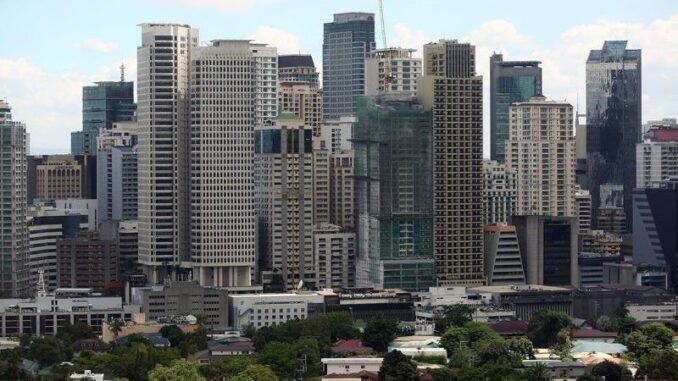
The Development Budget Coordination Committee (DBCC) has set the Philippines’ GDP growth target at six to seven percent in 2024 (or an average of 6.5 percent) and 6.5-7.5 percent (average of seven percent) in 2025.
The DBCC is composed of the Secretaries of DBM, DOF, NEDA and Governor of BSP and they are planning to have a meeting in November or December to review the macroeconomic targets and assumptions, and consequently the fiscal targets until 2028.
Now the multilateral agencies project lower growth this year and the next. The ADB’s Asian Development Outlook (ADO) July 2024 update sees growth of six percent in 2024 and 6.2 percent in 2025.
The WB’s Global Economic Prospects (GEP) June 2024 update sees a growth of 5.8 percent in 2024 and 5.9 percent in 2025.
And the most recent IMF Staff Mission last October 3 sees growth of 5.8 percent in 2024 and 6.1 percent in 2025.
Among private entities and their latest projections, Nomura Research sees 5.6 percent in 2024 and 6.1 percent in 2025.
Deutsche Bank Research projects 5.8 percent in 2024 and 5.6 percent in 2025. The ASEAN+3 Macroeconomic Research Office (AMRO) sees 6.1 percent in 2024 and 6.3 percent in 2025.
Finance Secretary Ralph Recto believes that the six percent DBCC target for 2024 is achievable and adjustments will likely be made for 2025.
He made this statement on the sidelines of the Asia CEO Awards where he was recognized as the “Lifetime Contributor Awardee for the Public Sector,” the highest recognition of the Asia CEO Awards.
Congratulations for this award, Sec. Ralph. And the economic team, the DBCC, should keep the growth target for the year. I personally believe that a 6.2 percent growth in 2024 is achievable.
For four reasons.
One, our GDP growth in the first half of the year was 6.1 percent already, buoyed by 6.3 percent in the second quarter. I see a 6.4 percent growth in Q3 to Q4.
Two, our unemployment rate from January to August 2024 averaged four percent, lower than January to August 2023 average of 4.3 percent.
Meaning there were more businesses, more jobs and economic activities created this year than last year.
Three, our inflation rate in Q3 has gone down to only 3.2 percent, from 3.6 percent in Q1 and Q2 and six percent in full year in 2023.
Low inflation means higher consumer confidence, raising household consumption which is about 75 percent of total GDP and hence, can pull up overall GDP growth.
And four, our manufacturing Purchasing Managers’ Index (PMI) is now the highest in East Asia: In August and September 2024, the Philippines had 51.2 and 53.7 points respectively.
In contrast, Taiwan has 51.5 and 50.8 points; Thailand has 52 and 50.4 points; Japan has 49.8 and 49.7 points; Malaysia has 49.7 and 49.5 points; China has 50.4 and 49.3 points; Indonesia has 48.9 and 49.3 points; Singapore has 50.9 and 48.3 points; South Korea has 51.9 and 48.3 points; and Vietnam has 52.4 and 47.3 points.
PMI as an economic indicator shows a country’s health in the manufacturing or services sector because it assesses and incorporates various business aspects like new orders, production, and employment. PMI above 50 points implies economic expansion while below 50 signifies economic slowdown if not contraction. Thus, it shows clear short-term business and economic trends.
Singapore and Vietnam reported their Q3 2024 GDP growth at 4.1 percent and 7.4 percent respectively, versus their Q3 2024 growth of one percent and 5.5 percent.
So Singapore and Vietnam were able to register fast growth in Q3 this year despite having low PMI below 50.
To conclude, the Philippines should be able to have high Q3 2024 GDP growth – I see 6.4 percent, maintained up to Q4 – given the declining unemployment rate, declining inflation rate and high PMI.
The bad economic environment in Europe is seen by many as possibly dragging the Philippines and other economies down due to lower global trade, lower remittances and so on.
I see differently. As nature hates a vacuum, capital also hates idleness. This means that capital, technology and industrious people from Europe should be moving toward Asia including the Philippines. So we can expect more investments, more tourism, more trade when capital migration from Europe becomes busier.
We keep the business optimism, we rely more on our domestic economic dynamism that can attract the attention of investors and professionals abroad to consider moving to the Philippines, both short- and long-term.
The economic team, the DBCC, can focus on fiscal consolidation, reducing the deficit and borrowings while there are no economic and finance crises.
Cut some spending, reduce the total public debt stock and annual interest payment. Such fiscal savings can be plowed back to more public infrastructure spending, both urban and rural infrastructures that will further improve our economic competitiveness and dynamism.


Be the first to comment